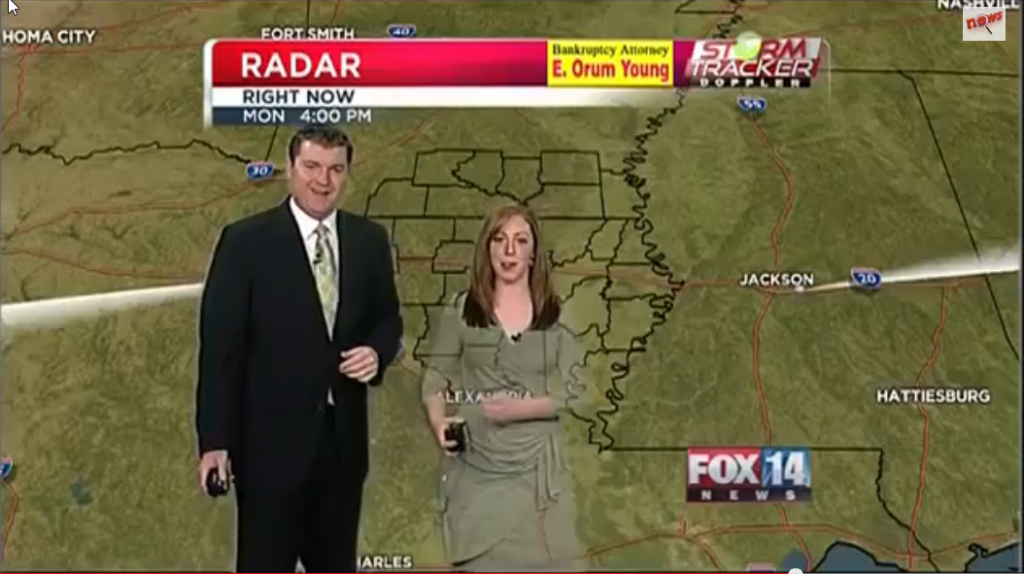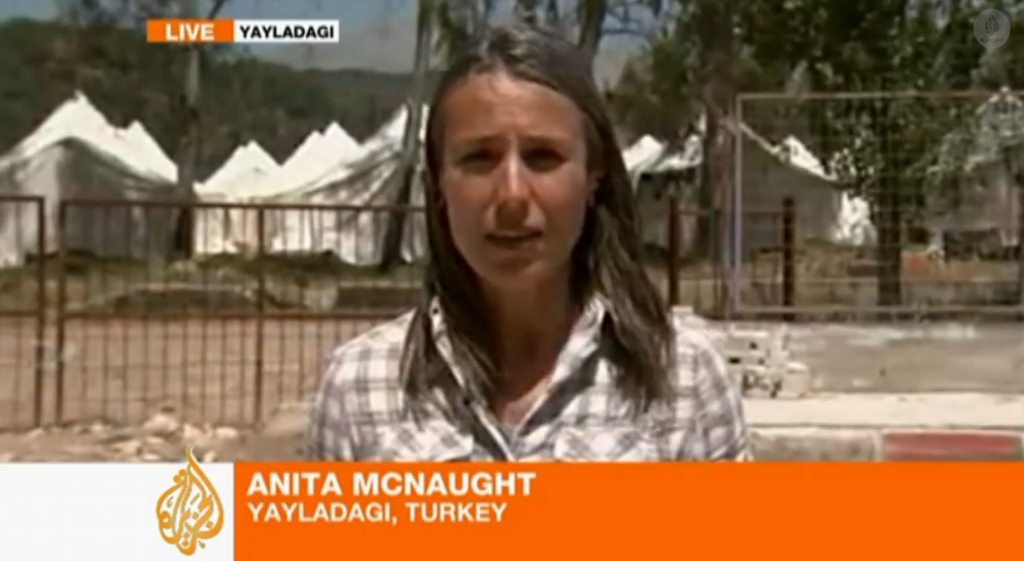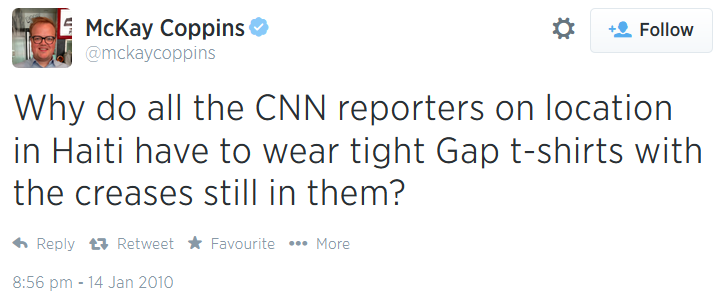What to wear reporting on camera
New TV journalists often wonder about the dos and don’ts of what to wear when reporting on camera. onMedia has compiled these tips from experienced DW TV reporters and news anchors Ben Fajzullin and Meggin Leigh.
DOS
Think about the background
The color of the background is important. You are going to disappear if you wear desert colors in a desert. Likewise, if you wear something dark at night, we will only see your head. In a studio, wearing green in front of a green screen or blue in front of a blue screen means your body disappears. By the way, red works better in front of a blue screen.

Notice how you can see the map behind the presenter through her clothes because she is wearing the same color as the screen behind her. You can watch the whole video here.
Wear solid bright colors
The camera loves vibrant colors. You might not wear bright pink that much in your daily life, but it actually looks great on camera. It’s the same for rich purples or magenta – they might look disgusting in daylight but the camera picks up these colors and so you stand out and catch the viewers’ attention. That said, if a color doesn’t suit you or your skin color, don’t wear it.

This Al Jazeera correspondent is dressed appropriately for the situation
Wear clothing (and makeup) appropriate to the story or event
Think about what you are going to be doing while reporting. You want to blend into the scene and wear appropriate clothing. So if you are covering a business function or some hard news event, wear a suit and tie if you’re male and a blazer with a dressy top if you are female. But a suit is inappropriate if you are reporting from a refugee camp or walking through a forest for a logging story – rather wear casual attire. The same goes for makeup, it should be appropriate for the event so don’t overdo it.
Wear clothing that looks natural for the weather
If it’s clearly raining, it’s not natural if you are getting wet so report from under an umbrella. If it snowing, it’s natural that you are bundled up in a coat and scarf and as you can see below, even gloves are allowed (although most broadcasters would want you to avoid wearing a hat). Correspondents who refuse to report with a coat on and then obviously look as if they are cold on camera just look silly. The same goes for the heat. If it’s blazing hot, take your suit jacket or blazer off or you’ll look ridiculous.
Wear a shirt if you’re a bloke
Always wear a collared shirt. It doesn’t have to be a dress shirt but even if you are doing a casual story, there’s not excuse for not having a collar.
Wear well-fitted clothing
Wear clothes that emphasize the waist and figure. The camera will make you look bigger than you are and if you are wearing shapeless clothing, you will end up looking lumpier on camera. It doesn’t have to be skin-tight though!
Tie your hair back if it’s windy
There’s nothing more distracting than having hair blowing all over your face. Here’s an example where the reporter definately needed a hair tie.
DON’TS
Avoid colors with meaning
Colors can be associated with a certain event or a certain political party. As a journalist, you need to be impartial, so you don’t want wear red when reporting on a party whose color is red. Likewise, don’t wear green if a team playing in a sports game you’re covering has green as their color.
Avoid small patterns and thin stripes
Big checks or wide stripes are fine. When they are too small or close together, however, they start flickering and cause an optical illusion on camera called the moiré effect. This also means no pin-striped shirts where the stripes are close together. Moiré is reduced in some newer cameras, but most still produce this effect, so you still need to be aware of the problem. You can see some examples in the video below.
Avoid all black or all white
Black absorbs lots of light, which means the details of black clothing are less visible on camera. This is especially true if you are light-skinned – when the camera is adjusted for your skin tone, your clothing will appear as a black blob. Conversely, white reflects lots of light, making it hard for the camera to pick up the true color of your face. This is important if you are dark-skinned – when the camera is adjusted for your skin tone, your shirt will glow! Here’s a link that explains more about colors on camera.
Avoid sleeveless dresses and tops
Unless you are covering a ‘light and fluffy’ event like a flower show, sleeveless dresses and tops are inappropriate and can make you look unprofessional. That said, there’s a trend in the United States for news anchors to wear sleeveless dresses but you won’t usually find female reporters with uncovered arms on international broadcasters such as Deutsche Welle, BBC and Al Jazeera. (Although here’s a BBC reporter wearing a strapless top (at 2’02) which in this case actually suits the event – if you watch the whole show reel, you’ll see her clothing in general is a good example of how to dress depending on the situation).
Avoid T-shirts for males (unless you work for CNN and are incredibly buff)
A T-shirt is too relaxed and can take diminish your authority as a reporter. Even if you are wearing casual trousers because you are out in the field, you can still wear a collared shirt. CNN’s correspondents have garnered some media attention in the past few years because of their tendency to wear tight T-shirts, but you want people to be listening to what you are saying, not checking out your pecs.

Avoid dangly earrings or clinking jewellery
Long earrings can be very distracting, as are bracelets or earrings that clink and clank against each other and make a noise on camera. The mics pick up every sound and amplify it.
Avoid shiny jewellery or metal tie clips
This includes oversized rings, bracelets, broaches and necklaces which can reflect the light and be distracting.
Avoid logos, brand-names or buttons
You are a journalist and therefore neutral. So don’t wear anything that has a name on it.
Don’t wear your sunglasses as a headband
Some female correspondents put their sunglasses up on their head to keep their hair from flying in their face. There might be a reason for doing it, but it looks unprofessional.
Don’t wear baseball caps
They might do it on US stations, but baseball caps can cast shadows on your face and it just looks bad on camera. Don’t do it.
You might also be interested in reading onMedia’s tips for journalists reporting on camera.
Compiled by Kate Hairsine from interviews with Ben Fajzullin and Meggin Leigh.



